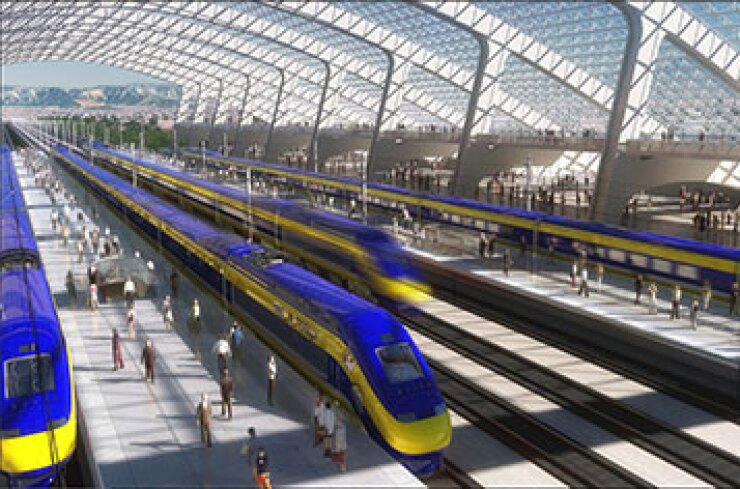
DALLAS -- Forty proposed major transportation and water infrastructure projects on a list commissioned by the Treasury Department could produce up to $1.1 trillion of economic benefits from their total estimated capital costs of $334 billion.
The study found that 39 of the projects face funding challenges, with increased capital costs a factor for 19 of the projects and 20 hampered by a lack of consensus among the relevant public agencies and private organizations.
Only nine of the 40 projects are being delayed by regulatory issues, the
The stated objective of the report was to identify 40 proposed transportation and water infrastructure projects that have major economic significance but whose completion has been delayed or is in jeopardy.
"The completion of these projects would deliver significant economic benefits to every region of the nation," the report said.
The top 40 list, which was released Dec. 30, was commissioned by the Treasury Department in support of President Obama's Build America Investment Initiative, said Monique Rollins, deputy assistant secretary for capital markets at the Treasury Department.
The investment initiative proposed the Qualified Public Infrastructure Bonds that Obama outlined in his 2015 State of the Union address and the direct federal loans to public-private infrastructure partnerships in the Financing America's Infrastructure Renewal credit program that was in Obama's proposed fiscal 2017 budget. Neither proposal advanced in Congress.
QPIBs could have been used to finance road, airport, water, and port projects owned by a local government but operated by public-private partnerships. QPIBs would not be subject to the federal alternative minimum tax or volume cap.
"The study highlights how investing in infrastructure projects may generate economic benefits for businesses, consumers, travelers, and residents across the country," Rollins said.
The team that developed the report for the Treasury Department was led by AECOM Inc., with assistance from Compass Transportation Inc., Raymond Ellis Consulting, and Rubin Mallows Worldwide Inc.
"This study aims to help re-focus the debate on projects with significant national economic benefits relative to their costs," the authors said.
Two large nationwide initiatives were not included in the top 40 but were added to the report because they would provide large returns on the investments, the authors said.
A $1.3 trillion project to develop roads that could accommodate self-driving vehicles would return $5 trillion to $7.5 trillion in economic benefits. Rebuilding the 47,000-mile interstate highway system would cost $790 billion to provide $3 trillion of net benefits.
Building all 40 projects on the list would result in benefits of $3.50 to $7 for every $1 of capital costs, the study said. Each of the projects carries a price tag of at least $300 million to build.
The list includes 14 highway, 10 rail, nine water -resources, and six port or waterway projects. Five of the projects are national in scope, with 17 projects in southern states, eight in the west, seven in the Midwest, and three in northeastern states.
Building a true high-speed rail system in the Northeast Corridor between Washington, D.C., and Boston would cost $101 billion but could provide gross economic benefits of up to $300 billion.
The project with the largest return on investment is a $28.6 billion effort to upgrade the capacity of the 2,600-mile Interstate 10 corridor from Florida to California. The additional capacity would result in $236 billion of net economic benefits.
Completing California's $58.8 billion high speed rail project would result in $261 billion of net economic benefits, according to the study.





